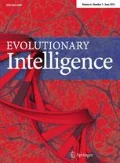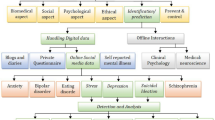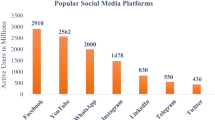Abstract
Recently, social media has become a part of daily people’s routine. People frequently share images, text, and videos in social media (e.g., Twitter, Snapchat, Facebook, and Instagram). Consequently, there is a demand for an automated method to monitor and analyze the shared social media content. This research developed a method that aims to detect any threat in the images or comments in the shared content. Instagram has gained popularity as the most famous social media website and mobile application for media sharing. Instagram enables users to upload, view, share, and comment on a media post (image or video). There are many unwanted contents in Instagram posts, such as threats, which may cause problems for society and national security. The purpose of this research is to construct a model that can be utilized to classify Instagram content (images and Arabic comments) for threat detection. The model was built using Convolutional Neural Network, which is a deep learning algorithm. The dataset was collected utilizing the Instagram API and search engine and then labeled manually. The model used was retrained on the images and comments training set with the classes of threat and non-threat. The results show that the accuracy of the developed model is 96% for image classification and 99% for comment classification. The result of this research will be useful in tracking and monitoring social media posts for threat detection.


(Source: [12])

(Source: [43])

(Source: [7])

(Source: [27])










Similar content being viewed by others
References
Abadi M, Barham P, Chen J, Chen Z, Davis A, Dean J, Devin M, Ghemawat S, Irving G, Isard M, Kudlur M, Levenberg J, Monga R, Moore S, Murray DG, Steiner B, Tucker P, Vasudevan V, Warden P, Wicke M, Yu Y, Zheng X (2016) TensorFlow: a system for large-scale machine learning, pp 265–283
Adel HM (2019) Arabic text classification: a review. Modern Appl Sci. https://doi.org/10.5539/mas.v13n5p88
Amin MZ, Nadeem N (2018) Convolutional neural network: text classification model for open domain question answering system. arXiv preprint arXiv:1809.02479
Ayah S (2019) Deep learning for sentiment analysis of arabic text. In: ArabWIC 2019: proceedings of the ArabWIC 6th annual international conference, pp 1–8
Bengio Y, Goodfellow IJ, Courville A (2015) Deep learning. Nature 521:436–444
Biniz M, Boukil S, Adnani F, Cherrat L, Moutaouakkil A (2018) Arabic Text classification using deep learning technics. Int J Grid Distrib Comput 11:103–114
Dalal N, Triggs B (2005) Histograms of oriented gradients for human detection. In: 2005 IEEE computer society conference on computer vision and pattern recognition (CVPR’05). IEEE, San Diego, CA, USA, pp 886–893
Deng L, Yu D (2014) Deep Learning: Methods and Applications. Found Trends® Signal Process 7:197–387. https://doi.org/10.1561/2000000039
Deng J, Dong W, Socher R, Li L-J, Li Kai, Fei-Fei Li (2009) ImageNet: a large-scale hierarchical image database. In: 2009 IEEE conference on computer vision and pattern recognition. IEEE, Miami, FL, pp 248–255
Dietrich D, Heller B, Yang B, EMC Education Services (2015) Data science & big data analytics: discovering, analyzing, visualizing and presenting data. Wiley, Indianapolis, IN
Dong B, Wang X (2016) Comparison deep learning method to traditional methods using for network intrusion detection. In: 2016 8th IEEE international conference on communication software and networks (ICCSN). IEEE, Beijing, China, pp 581–585
Geethu GS, Kamatchi T (2016) Recognition of facial expressions in image sequence using multi-class SVM. Int J Innov Res Comput Commun Eng 4(8):14630–14638
Ghadah A, Taha O, Thomas HR (2017) Challenges in sentiment analysis for arabic social networks. Proc Comput Sci 117:89–100
Hadid A, Member S (2006) Face description with local binary patterns: application to face recognition. IEEE Trans Pattern Anal Mach Intell 28(12):2037–2041
Hassannejad H, Matrella G, Ciampolini P, De Munari I, Mordonini M, Cagnoni S (2016) Food Image recognition using very deep convolutional networks. In: Proceedings of the 2nd international workshop on multimedia assisted dietary management. ACM, New York, NY, USA, pp 41–49
He K, Zhang X, Ren S, Sun J (2016) Deep residual learning for image recognition. In: 2016 IEEE conference on computer vision and pattern recognition (CVPR). IEEE, Las Vegas, NV, USA, pp 770–778
Howard AG, Zhu M, Chen B, Kalenichenko D, Wang W, Weyand T, Andreetto M, Adam H (2017) MobileNets: efficient convolutional neural networks for mobile vision applications. arXiv:1704.04861 Cs
Imane G, Houda S, Faical A, Billel G, Damien N (2019) Arabic natural language processing: an overview. J King Saud Univ Comput Inf Sci (in Press, available online 23 February 2019)
Instagram A (2019) Instagram: active users 2018| Statista. https://www.statista.com/statistics/253577/number-of-monthly-active-instagram-users/. Accessed 18 Nov 2019
Islam SMS, Rahman S, Rahman MM, Dey EK, Shoyaib M (2016) Application of deep learning to computer vision: A comprehensive study. In: 2016 5th international conference on informatics, electronics and vision (ICIEV). pp 592–597
Itani M, Roast CR, Al-Khayatt S (2017) Corpora for sentiment analysis of Arabic text in social media, pp 64–69
Jacovi A, Sar Shalom O, Goldberg Y (2018) Understanding convolutional neural networks for text classification. In: Proceedings of the 2018 EMNLP workshop blackboxNLP: analyzing and interpreting neural networks for NLP. Association for Computational Linguistics, Brussels, Belgium, pp 56–65
Johansson F, Brynielsson J, Quijano MN (2012) Estimating citizen alertness in crises using social media monitoring and analysis. In: 2012 European intelligence and security informatics conference. IEEE, Odense, Denmark, pp 189–196
Kandias M, Stavrou V, Bozovic N, Gritzalis D (2013) Proactive Insider threat detection through social media: the youtube case. In: Proceedings of the 12th ACM workshop on workshop on privacy in the electronic society. ACM, New York, NY, USA, pp 261–266
Kang X, Li S, Benediktsson JA (2014) Feature extraction of hyperspectral images with image fusion and recursive filtering. IEEE Trans Geosci Remote Sens 52:3742–3752. https://doi.org/10.1109/TGRS.2013.2275613
Kim Y (2014) Convolutional neural networks for sentence classification. In: Proceedings of the 2014 conference on empirical methods in natural language processing (EMNLP). Association for Computational Linguistics, Doha, Qatar, pp 1746–1751
Krizhevsky A, Sutskever I, Hinton GE (2012) ImageNet classification with deep convolutional neural networks. In: Pereira F, Burges CJC, Bottou L, Weinberger KQ (eds) Advances in neural information processing systems, v ol 25. Curran Associates, Inc., pp 1097–1105
Kumar G, Bhatia PK (2014) A detailed review of feature extraction in image processing systems. In: 2014 fourth international conference on advanced computing & communication technologies. IEEE, Rohtak, India, pp 5–12
LeCun Y, Bengio Y (1998) Convolutional networks for images, speech, and time-series. The handbook of brain theory and neural networks, pp 255–258
Michel P, Kaliouby RE (2003) Real time facial expression recognition in video using support vector machines. In: ICMI’03: Proceedings of the 5th international conference on Multimodal interfaces, pp 258–264
Mikolov T, Sutskever I, Chen K, Corrado GS, Dean J (2013) Distributed representations of words and phrases and their compositionality. In: Burges CJC, Bottou L, Welling M, Ghahramani Z, Weinberger KQ (eds) Advances in neural information processing systems, vol 26. Curran Associates, Inc., pp 3111–3119
Nadeem MSM (2018) Text mining and social media analysis of pizza industry using R. 4:7
Noor AM, Sandra K (2018) Preprocessing does matter: parsing non-segmented Arabic. In: Proceedings of the 17th international workshop on Treebanks and linguistic theories (TLT 2018), December 13–14, 2018, Oslo University, Norway
Patterson J, Gibson A (2017) Deep learning: a practitioner’s approach. O’Reilly Media Inc, Sebaastopol
Ponti MA, Ribeiro LSF, Nazare TS, Bui T, Collomosse J (2017) Everything you wanted to know about deep learning for computer vision but were afraid to ask. In: 2017 30th SIBGRAPI conference on graphics, patterns and images tutorials (SIBGRAPI-T). IEEE, Niterói, pp 17–41
Qadi LA, Rifai HE, Obaid S, Elnagar A (2019) Arabic text classification of news articles using classical supervised classifiers. In: 2nd international conference on new trends in computing sciences (ICTCS), Amman, Jordan, 2019, pp 1–6
Russakovsky O, Deng J, Su H, Krause J, Satheesh S, Ma S, Huang Z, Karpathy A, Khosla A, Bernstein M, Berg AC, Fei-Fei L (2015) ImageNet large scale visual recognition challenge. arXiv:1409.0575 Cs
Simonyan K, Zisserman A (2014) Very deep convolutional networks for large-scale image recognition. arXiv:1409.1556 Cs
Sykora MD, Jackson TW, OBrien A, Elayan S (2013) National security and social media monitoring: a presentation of the EMOTIVE and related systems. In: 2013 European intelligence and security informatics conference. IEEE, Uppsala, Sweden, pp 172–175
Szegedy C, Vanhoucke V, Ioffe S, Shlens J, Wojna Z (2015) Rethinking the inception architecture for computer vision. arXiv:1512.00567 Cs
Thai LH, Hai TS, Thuy NT (2012) Image classification using support vector machine and artificial neural network. Int J Inf Technol Comput Sci 4:32–38. https://doi.org/10.5815/ijitcs.2012.05.05
Tian D (2013) A review on image feature extraction and representation techniques. Int J Multimed Ubiquitous Eng 8(4):385–395
Viola P, Jones M (2001) Rapid object detection using a boosted cascade of simple features. In: Proceedings of the 2001 IEEE computer society conference on computer vision and pattern recognition (CVPR 2001). IEEE Comput. Soc, Kauai, HI, USA, pp I-511-I–518
Whitehill J, Omlin CW (2006) Haar features for FACS AU recognition. In: 7th international conference on automatic face and gesture recognition (FGR06). pp 5–101
Wu Y, Qin X, Pan Y, Yuan C (2018) Convolution neural network based transfer learning for classification of flowers. In: 2018 IEEE 3rd international conference on signal and image processing (ICSIP), pp 562–566
Xia X, Xu C, Nan B (2017) Inception-v3 for flower classification. In: 2017 2nd international conference on image, vision and computing (ICIVC). IEEE, pp 783–787
Zhang X, Zhao J, LeCun Y (2015) Character-level convolutional networks for text classification. In: Cortes C, Lawrence ND, Lee DD, Sugiyama M, Garnett R (eds) Advances in neural information processing systems, vol 28. Curran Associates, Inc., pp 649–657
Author information
Authors and Affiliations
Corresponding author
Additional information
Publisher's Note
Springer Nature remains neutral with regard to jurisdictional claims in published maps and institutional affiliations.
Rights and permissions
About this article
Cite this article
AlAjlan, S.A., Saudagar, A.K.J. Machine learning approach for threat detection on social media posts containing Arabic text. Evol. Intel. 14, 811–822 (2021). https://doi.org/10.1007/s12065-020-00458-w
Received:
Revised:
Accepted:
Published:
Issue Date:
DOI: https://doi.org/10.1007/s12065-020-00458-w




